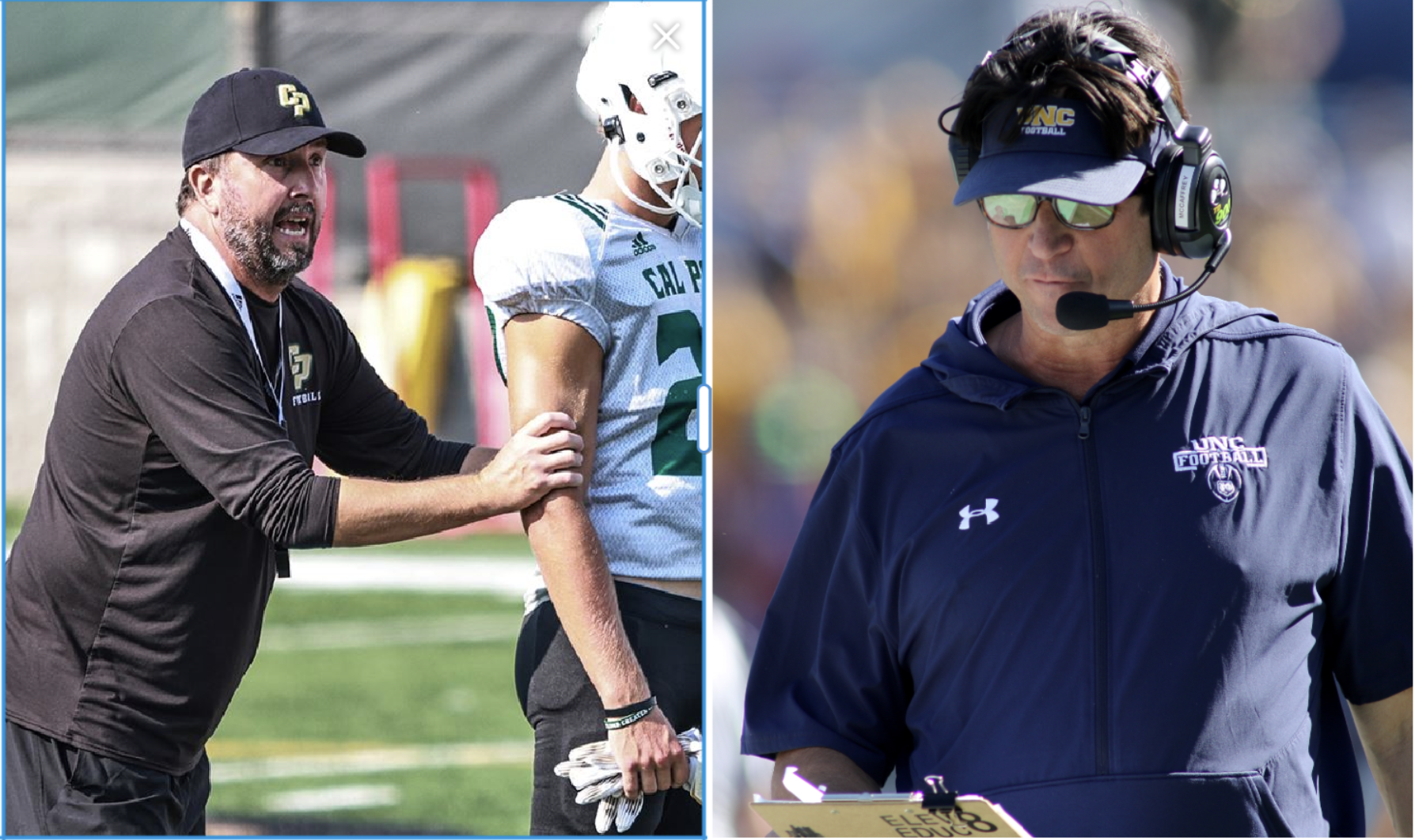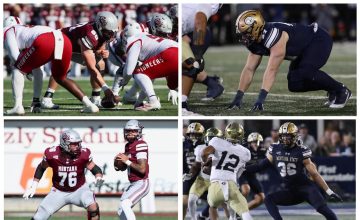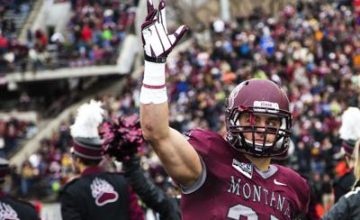If Ed McCaffrey, at last year’s Big Sky Kickoff, was a myth, at this year’s he was just a ghost.
He was there, no doubt, his long strides eating up the hallways of the Davenport Grand Hotel as they once did the turf of Mile High Field.
This reporter’s own eyes confirmed it at the pre-media days banquet Sunday night, when Ed flashed a not-exactly-enthusiastic thumbs up at commissioner Tom Wistrcill’s joking suggestion that part of the conference’s new TV deal with Scripps involved Dylan McCaffrey, Ed’s third of four sons and also his starting quarterback at Northern Colorado, agreeing to be mic’d up during games.

But seeing a ghost is different from pinning them down, and by the time I finished talking to Bruce Barnum the next morning, Ed, who might have been at Northern Colorado’s designated table at the start of the media period, had long since disapparated, a 6-foot-5 Casper in an expensive suit jacket. That left Dylan, All-American linebacker David Hoage and first-year defensive line coach Eddie Gonzales III, who had three sacks for the Bears a year ago, to represent the team that might have the highest questions-to-wins ratio in the league heading into the new season.
Around the corner, representing the team that’s likely second in that metric, Beau Baldwin was his usual genial self, looking no worse for wear from the evening before, when a steady parade of well-wishers, hand-shakers and old acquaintances made him one of the busiest men on the terrace of the Davenport Grand.
Baldwin is a good talker, prone to circling back around to thoughts as they come to him in the middle of a sentence. It’s only when you come back to the recordings later that you realize that – veteran of double-digit preseason media days that he is – Baldwin is quite practiced at saying a lot and saying not much at the same time.
I’m not against transfers, he says, I think they can be very beneficial for your program. Then, three seconds later: But I don’t think you want to be relying on it.
On the surface, he’s is in a similar situation to McCaffrey, both in their second years trying to turn around dormant programs – Cal Poly, in Baldwin’s case. In practice, Baldwin’s prior head coach gig in the Big Sky – a nine-year run at Eastern Washington from 2008 to 2016 in which he won the 2010 national title (still the last captured by a Big Sky team) and went to the semifinals on three other occasions – gives him some of the deepest roots in the conference.
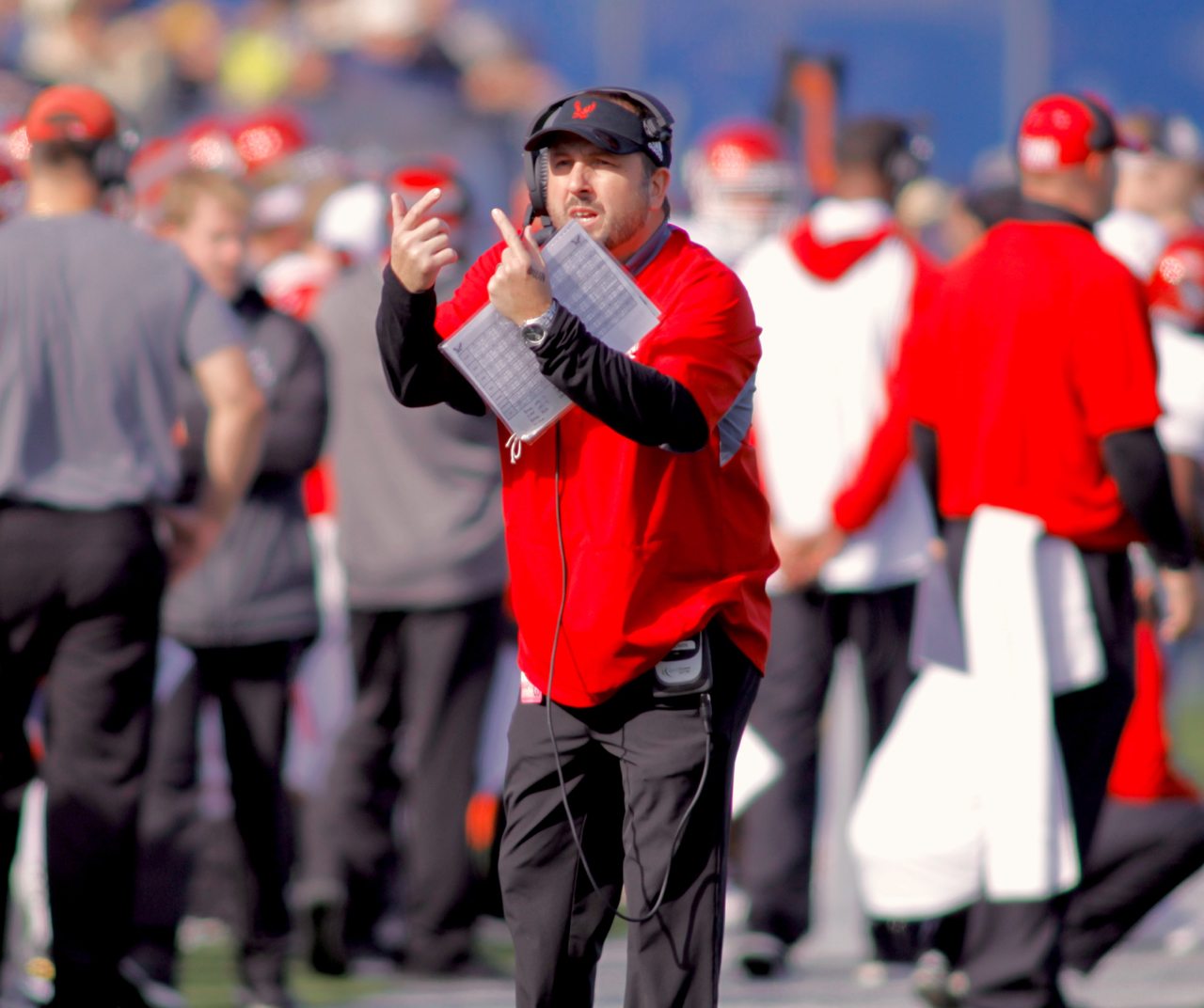
As they always do in the coaching profession, those roots manifest themselves in personal connections. Baldwin’s old mentor and the man he inherited the EWU job from, Paul Wulff, was at Sacramento State before rejoining Baldwin at Cal Poly. Cherokee Valeria, who’s still on the Hornets’ staff, coached under Baldwin at Eastern. From there, the links spiral out. Baldwin is connected to Northern Arizona head coach Chris Ball through Wulff, who hired Ball as his defensive coordinator at Washington State. He’s connected to Portland State head coach Bruce Barnum through Barnum’s old DC Malik Roberson, who coached with Baldwin at Eastern Washington before following Wulff to WSU. And so on.
Those connections, and prior success, didn’t pay out much for Baldwin in 2021, his first full season at Cal Poly, when the Mustangs finished 2-9, one game worse than McCaffrey’s Northern Colorado Bears.
Now, going into their second seasons, the former Pro Bowl receiver in Greeley and the quarterback whisperer in San Luis Obispo are linked in interesting ways. Baldwin enters the season with 27 years of college coaching experience and an FCS national championship, McCaffrey with one and a Colorado state high school crown. But as they face the same struggles and hear the same questions, they – and the athletic departments that hired them – are learning the same lesson: The first year is about the headlines. Everything after that is about the work.
***
There are two ways head coaches get hired. There’s The Way of Success – the previous guy won so much he moved up, leaving behind, in most cases, a roster stacked with talent and a system to follow.
Until three years ago, Beau Baldwin had only ever known The Way of Success – his first head coaching position was for one year at his Division II powerhouse alma mater, Central Washington, before he inherited an Eastern Washington team that had finished above .500 seven times in eight years under Wulff. That also describes the other second-year head coach in the league, Brent Vigen at Montana State, after Jeff Choate left a top-10-caliber team in Bozeman to try his hand at being a Power 5 coordinator for the Longhorns in Austin, Texas. Vigen led MSU to its first national championship game in 37 years in his first season as a college head coach.
Then there’s The Way of Failure – much more common and much more interesting. The previous guy lost so much he got fired, or stepped down, leaving, in most cases, a whole lot of work.
Things can’t stay the same, otherwise the previous coach would still be there. But most athletic departments realize that there are very few miracleworkers who can “take his’n and beat your’n, and then turn around and take your’n and beat his’n,” as was (perhaps apocryphally) said about Bear Bryant, or, in this context, “take a Northern Colorado program that had won seven combined games in the previous three years and finish .500 in the first season.”
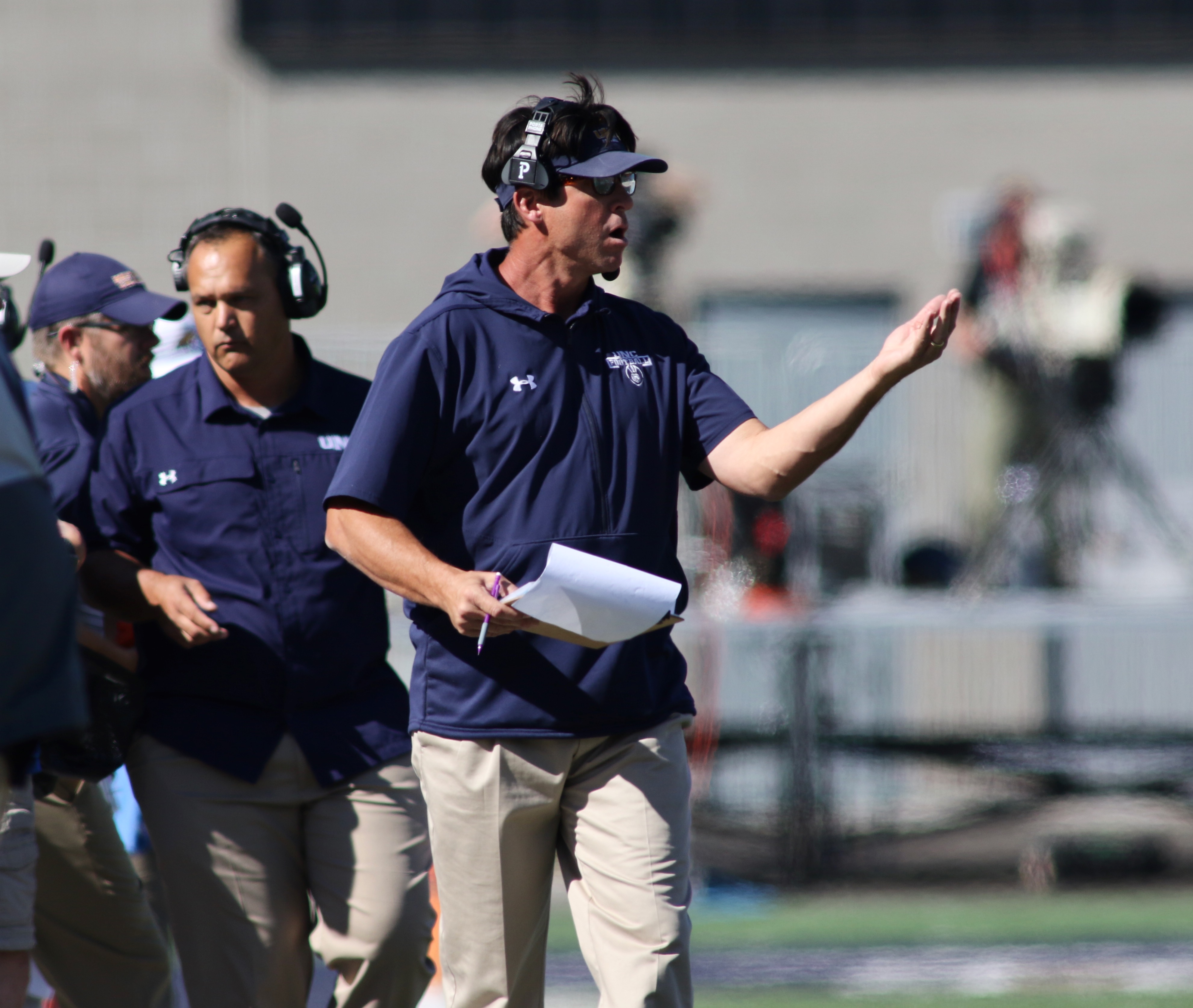
The second year, though. The second year is when the sparkling good vibes from the hire and the promises of a new era start to fade. Two years of recruiting, two years of transfers, two years of installing new schemes and instilling new culture – not enough time to completely change a program, not enough, maybe, to reach true contention. But enough to start heading in the right direction.
“Last year, I’d say we put one block down, but time limited us,” Dylan McCaffrey said. “Time limited us with the amount of stuff we could do on the field, the amount of stuff we could do off the field, the amount of community buy-in we could get. But I think now you’re seeing all the blocks get put in place where we’re starting to build one hell of a pyramid.”
Take a look at the most successful coaches around the league. Jay Hill went from 2-10 in his first year at Weber State, the Wildcats’ third-straight season with just two wins, to 6-5 in his second, and hasn’t been under .500 since. Bobby Hauck in his second stint at Montana (a questionable Way of Failure case, but we’ll allow it since the Griz hadn’t made the playoffs or beaten the Bobcats in back-to-back years and the boosters wanted to hang Bob Stitt from the steeple of Main Hall) went from 6-5 in his first year to 10 wins and a quarterfinal appearance in his second. Dan Hawkins at UC Davis? The Aggie alum went 5-6 in his first year, 10-3 and a Big Sky title in his second.
Two years in, change can no longer be promised at press conferences. It has to be seen on the field.
***
Northern Colorado’s December 2019 hiring of McCaffrey, the hometown hero who won two Super Bowls and had three straight 1,000-yard receiving seasons just down the road in Denver for the Broncos, was sharp, shocking and immediately fascinating – the move that launched a thousand takes.
Some thought it was a bid to use his name for any kind of relevance after the Bears let Earnest Collins Jr. twist in the wind for nine years, finishing above .500 just twice and with three or fewer wins six times – a harsh fall into irrelevance for a program that won back-to-back Division II national championships in the 1990s.

Others thought it was a bid to capitalize on his clout for recruiting. Even though Ed had just two years of head coaching experience – two years of coaching experience, period – when the Bears hired him, he’d won a Colorado state championship in the first of those years at Valor Christian High School and had access to some of the best prep talent in the state. Still others saw the giant flashing warning signs in the phrase “two years of coaching experience, period” and figured that UNC didn’t have any idea behind the hiring at all.
The near-immediate transfer commitment of Dylan McCaffrey, a former four-star quarterback for Valor Christian who went on to play in 13 games over four years at Michigan, didn’t do anything to quiet the speculation.
Neither did the Bears opting out of the 2021 spring season, or Ed’s no-show at last fall’s Big Sky Kickoff, or Ed’s oldest son and offensive coordinator Max McCaffrey allegedly throwing a broken clipboard at a fan during a 40-7 pasting by Montana State. The Bears’ 3-8 record – about par for Northern Colorado recently – was still puzzling because Dylan and the offense struggled while the previously unknown defense showed flashes. Hoage, a rotation linebacker, blossomed into a devastating pass rusher who became the program’s first All-American since 2015.
All that would have been fine, more or less, except that the Northern Colorado offseason then said, You thought that was crazy? Hold my (locally-sourced, small-batch, ethically-brewed craft) beer.
In an exodus covered primarily by Jadyn Watson-Fisher of the Greeley Tribune, more than 30 Northern Colorado players entered the transfer portal, with some players and their families accusing the staff of creating a toxic environment on their way out.
Ed McCaffrey denied those allegations, wished the departing players well in public statements and unwillingly found himself the subject of another Rorschach test. On one hand, it wasn’t shocking that someone with no college coaching experience might be in over his head, or that a man who hired his oldest son as offensive coordinator (Max’s previous coaching experience: zero) and started another of his sons at quarterback (Dylan’s season-long passing line: 60.4% completion rate, 1,332 yards, five touchdowns, seven interceptions) would play favorites.
On the other hand, wouldn’t you also want to make changes to a roster that had won seven total games in the previous three seasons, and wouldn’t some of those players react negatively when told that they should look for other schools?
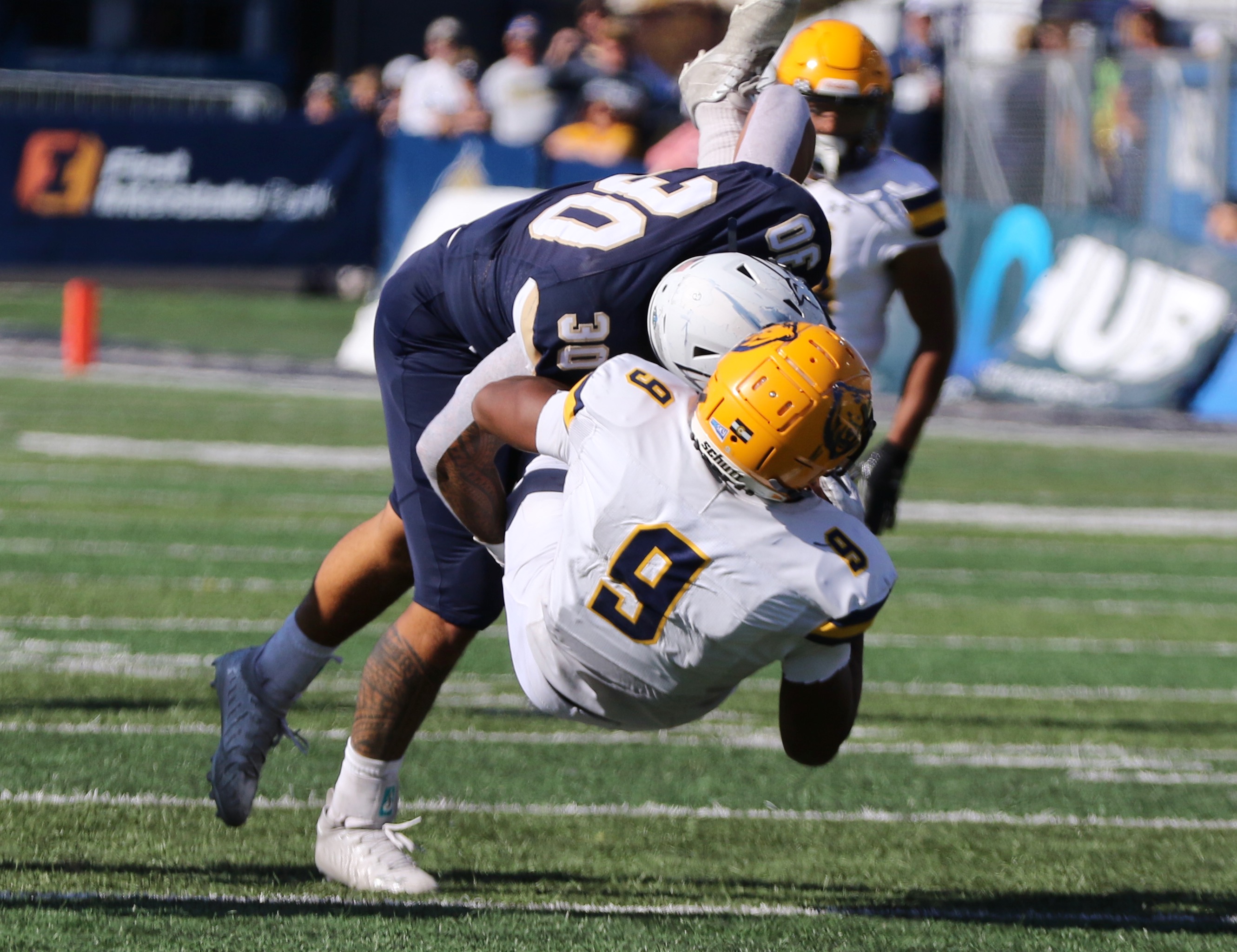
If you squint, and maybe down a couple of the offseason’s stash of high-test IPAs, the Bears could surprise this year. Washington State transfer Kassidy Woods, their leading receiver from a year ago, and running back Elijah Dotson, a grad transfer from Sac State who was a two-time all-conference first-teamer with the Hornets, are two-thirds of an offensive skill position trio that, along with Dylan McCaffrey, has the pedigree to be one of the best in the Big Sky.
Hoage is already that, and despite losing leading tackler Jace Bobo to the portal, UNC has reloaded with plenty of defensive talent dropping down from the FCS, including DBs Cameron Murray (Wyoming) and Bryan Sarente Jr. (UNLV), linebackers Payton Polson (Colorado State) and Tama Tuitele (Navy), and defensive linemen Austin Williams, Kanaan Turnbull (both Colorado) and Lamar Goods (Florida).
Unfortunately, the moral of the McCaffrey family experiment at Northern Colorado, so far, is that pedigree is different than production. Navigating that gap is the job of Ed McCaffrey, the Ghost of Spokane. It’s unclear what will happen this fall in Greeley. What seems likely is that it will be entertaining.
“(We’re looking forward) to playing Montana, Eastern Washington, Wyoming,” Hoage said. “I’m going to continue making that personal, as well as the team. Everybody asks us, what do we have to prove, and the reality is that we just have to prove that we’re the best. And once we do, ain’t nothing stopping us.”
***
A thousand miles to the west-southwest, Baldwin is trying to build a program with the advantage of anonymity that hasn’t been granted to the McCaffreys.
Baldwin’s name doesn’t carry the cachet of a multiple-time Super Bowl champion’s, but to astute observers of the Football Championship Subdivision, his hiring on December 11, 2019 – the day before McCaffrey’s – came with just as many delectable, reflexive questions.
Cal Poly is replacing Tim Walsh – with Beau Baldwin? And he said yes?
And then a second later: What offense are they possibly going to run?
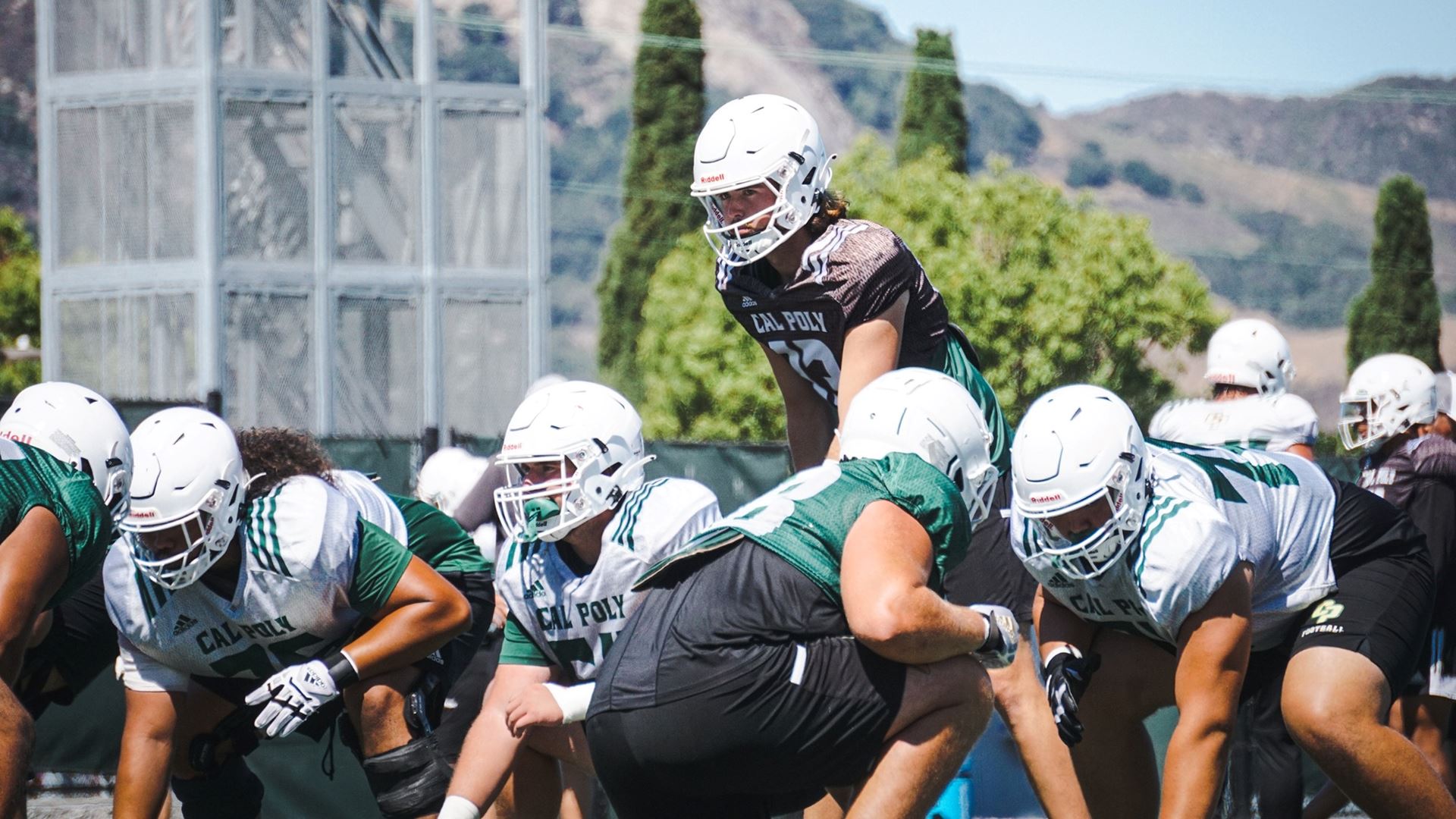
After 11 years with Walsh and the triple option, hiring Baldwin to run his trademark high-tempo spread was like a lifelong vegetarian breaking his fast with a full-on pig roast – extreme, reckless and likely to cause a bit of a mess.
Quarterbacks who can throw, offensive linemen who can pass block, running backs who aren’t fullbacks – all kinds of rare species have descended on San Luis Obispo in the two-and-a-half years since Baldwin’s hiring.
The need to rehaul the roster – along with the resume Baldwin built up in the previous 25 years of his coaching career – has brought him a longer leash, a tacit acknowledgement that the rebuild will take a couple years.
Consequently, his rhetoric has tended towards stability. He’s not here to make the Mustangs exciting right away. He’s here to make them good, sooner or later.
“Results, being on the win side or the loss side, all those things get better over time if you focus on the process stuff,” Baldwin said.
Cal Poly went 0-3 before giving up on the abbreviated 2021 spring season, citing COVID-19 concerns. The Mustangs’ two wins in the fall were over non-scholarship San Diego (by 11) and hapless Idaho State (by 3). Every other game they lost by double digits.
Baldwin’s 12 losses in 14 games are one more than he had in his first three full seasons at Eastern Washington.
Run or pass – the crucial question when Baldwin came in – hasn’t mattered much. The Mustangs averaged 2.6 yards per carry and five quarterbacks combined for a 51.5% completion percentage, 12 touchdowns and 15 interceptions.
The defense gave up over 460 yards per game and created just 15 takeaways in 11 games. Two kickers combined to go 5 of 12 on field goals.
None of it was good.
Tucked away in San Luis Obispo, with no hurled clipboards or mass migrations to clutter up the bad football, Baldwin is confident he’ll be able to continue building his program the way he wants, no matter what happens in 2022.
He’s probably right, and what’s more, his resume says it’s foolhardy to bet against him.
What’s certain, though, is that what happens in Year 2 – the Year of Changes, the Year of Progress – will reveal a great deal about where Northern Colorado and Cal Poly are going under their new coaches.
“Sometimes you might say, oh, it takes two years, or it takes three,” Baldwin said. “You just don’t know. There’s a lot of factors that might come into play. And what is that? Is it building it to be .500? Is it building it to be a playoff team? Is it building it to chase a national title? I don’t know that there’s any true number of years. … But you’re still aggressively trying to go after it. Your most important season is your next season.”

